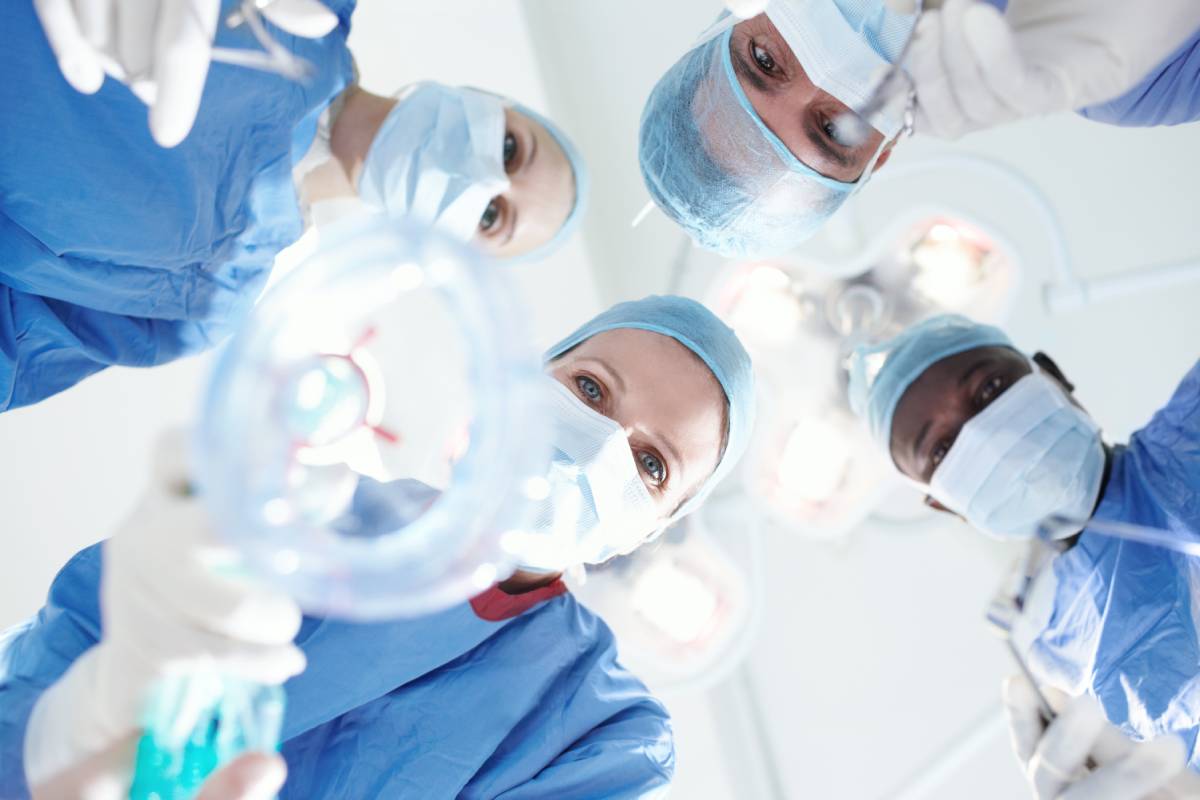The surgical stress response was first described in the 1920s by David Patten Cuthbertson, a chemist who discovered dramatic increases in nitrogen, potassium, phosphorus, sulfur, and creatine—known as muscle breakdown metabolites—in patients following hospital admission.1 Surgery is a traumatic event for the body and triggers metabolic and hormonal changes. Anesthesia drugs and techniques may modulate immune and inflammatory systems as the body undergoes the surgical stress response, influencing long-term outcomes.
The full physiology of the surgical stress response can be described through neuro-hormonal and immunological responses. The former consists of changes to the sympatho-adrenomedullary (SAM) and the hypothalamic-pituitary-adrenal (HPA) axes. Surgical trauma activates the SAM axis by stimulating peripheral pain receptors, which transmit signals via Aδ and C fibers to the brain.2 Adrenaline and noradrenaline are released, causing hypertension and redirecting blood flow to vital organs in lieu of the kidneys and the GI tract. Activation of the HPA axis begins at the hypothalamus’ paraventricular nuclei (PVN). Following this activation, corticotropic cells from the pituitary release corticotropin-releasing hormone, the precursor to adrenocorticotropic hormone (ACTH). ACTH in turn stimulates cortisol production, the body’s main stress signal that plays a large role in modulation of immunological, inflammatory, and metabolic functions. The natural circadian rhythm is flattened, and an ultradian rhythm is imposed. This misalignment may cause irregular fluctuations in energy, alertness, and hormonal levels, leading to fatigue, impaired cognitive function, and metabolic imbalances.3 In addition, the innate immune response is activated, involving neutrophils, macrophages, and natural killer (NK) cells. These release cytokines like IL-1β, IL-6, IL-8, and TNF-α, while an increase in Th 2 cell activity increases the risk of infectious complications, such as pneumonia or wound infection.
Anesthesia drugs and techniques can significantly influence the surgical stress response. For example, volatile anesthetics can suppress stress hormones like ACTH, cortisol, growth hormone, and catecholamines more effectively compared to intravenous agents such as propofol.4 Additionally, a meta-analysis of the effects of volatile agents in patients undergoing cardiac surgery showed these drugs could inhibit ischemic-reperfusion injury, exhibiting a cardioprotective effect. Concerning cancer and inflammation, a 2021 retrospective study indicated volatile anesthesia could have negative effects on cancer progression, as it increases certain tumor growth factors like HIF1α and insulin-like growth factor. On the other hand, propofol seems to decrease HIF1α and has anti-inflammatory effects.
In vitro evidence seems to support the pro-metastatic effect of inhalational anesthetics. Halothane increased the development of lung metastases when lung cancer cells were implanted into mice. Another murine study showed similar results when mice injected with B16 melanoma cells were exposed to halothane or isoflurane.5 In contrast, propofol has shown extensive anti-metastatic effects. Patients undergoing breast cancer surgery with propofol administration had increased NK cell activity, no change in pro-inflammatory cytokines, and increased apoptosis. In another pre-clinical study, propofol inhibited the invasiveness of HeLa human cervical carcinoma, HT1080 human fibrosarcoma, HOS human osteosarcoma, and RPMI-7951 human melanoma cell lines.5 Propofol has additional immune-protective effects: it is anti-inflammatory by inhibiting cyclooxygenase (COX)-2 and reducing prostaglandin E2; it preserves NK cell activity; it diminishes the production of pro-inflammatory cytokines; and it enhances the activation of Th 1 cells that boost cellular immunity.6
The surgical stress response encompasses a variety of bodily changes that can significantly influence postoperative recovery and long-term morbidity. Anesthetic and analgesic agents and techniques used throughout the perioperative process have the potential to modulate the immune and inflammatory responses, impacting both short- and long-term outcomes. In practice, the surgical stress response should be modulated through a multi-modal approach, including preoperative interventions (e.g., patient education and comfort), intraoperative strategies (e.g., optimizing anesthesia and fluid management), and postoperative measures (e.g., proper nutrition, early mobilization). As much of the current evidence stems from retrospective studies and preclinical models, the need arises for more robust, prospective clinical trials to better understand how anesthesia affects the surgical stress response.
References
- Wilmore, D. W. “From Cuthbertson to Fast-Track Surgery: 70 Years of Progress in Reducing Stress in Surgical Patients:” Annals of Surgery, 236(5), 2002, 643–648, https://doi.org/10.1097/00000658-200211000-00015
- Hirose, M., et al. “Intraoperative Assessment of Surgical Stress Response Using Nociception Monitor under General Anesthesia and Postoperative Complications: A Narrative Review.” Journal of Clinical Medicine, 11(20), 2022, 6080, https://doi.org/10.3390/jcm11206080
- Walker, J. J., et al. “Origin of Ultradian Pulsatility in the Hypothalamic–Pituitary–Adrenal Axis.” Proceedings of the Royal Society B: Biological Sciences, 277(1688), 2010, 1627–1633. https://doi.org/10.1098/rspb.2009.2148
- Iwasaki, M., et al. “Anesthesia, Surgical Stress, and ‘Long-Term’ Outcomes.” Acta Anaesthesiologica Taiwanica, 53(3), 2015, 99–104. https://doi.org/10.1016/j.aat.2015.07.002
- Edwards, Z. E., and Kelliher L. J. S. “Propofol-TIVA Versus Inhalational Anesthesia for Cancer Surgery.” Digestive Medicine Research, 3(0), 2020. https://doi.org/10.21037/dmr-20-58
- Ivascu, R., et al. “The Surgical Stress Response and Anesthesia: A Narrative Review.” Journal of Clinical Medicine, 13(10), 2024, 3017, https://doi.org/10.3390/jcm13103017
